Hmong ethnic people dwelling in Dong Van Karst Plateau (Ha Giang Province) are very proud of their traditional crafts of linen weaving and blacksmithing which are famous in Tay Bac (the Northwest of Vietnam). If blacksmithing is well suited to men, weaving is for the females. By making colourful cloth, these women have added vitality to this sterile area of rocky mountains.
In the past, the Hmong frequently moved from place to place, said Thao My Giang from Ta Lung Commune, Dong Van District. At that time, whenever moving from a place, the Hmong women always brought maize seeds and flax seeds with them. Once a new place was found, Hmong men immediately built forges to make tools such as knives, hoes, and plows while women found soil on rocky mountains to grow maize and flax. Maize helped feed them with Men Men (cooked cornmeal), steamed corn; and flax provided fiber to weave cloth for brocade dress making.
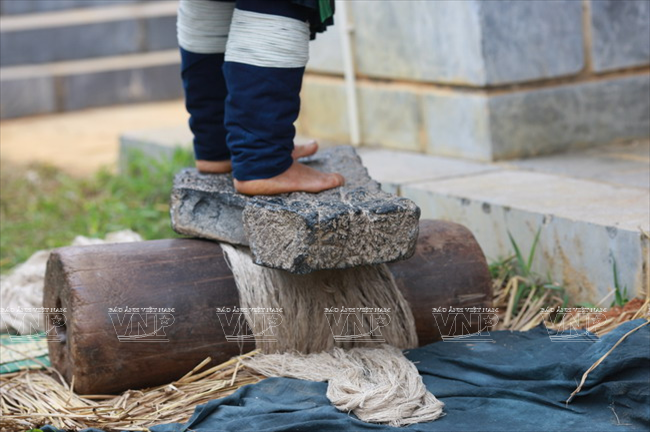
This method of processing can produce softer flax fiber for weaving.
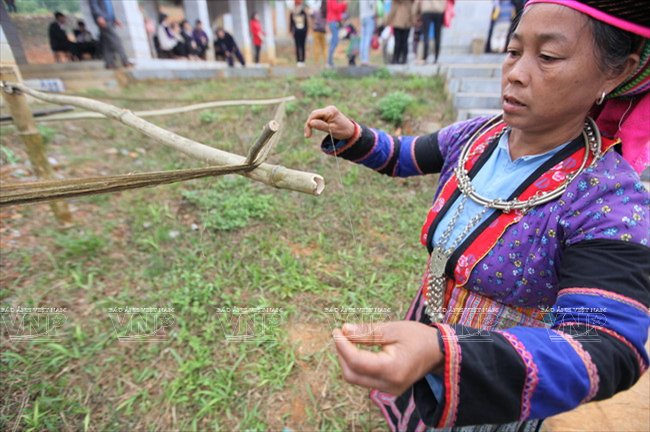
Flax set to be spun.
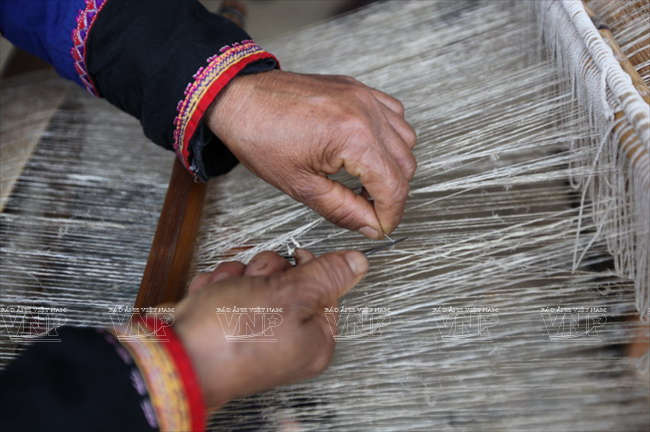
During weaving, bad flax fiber is cut off to avoid tearing.
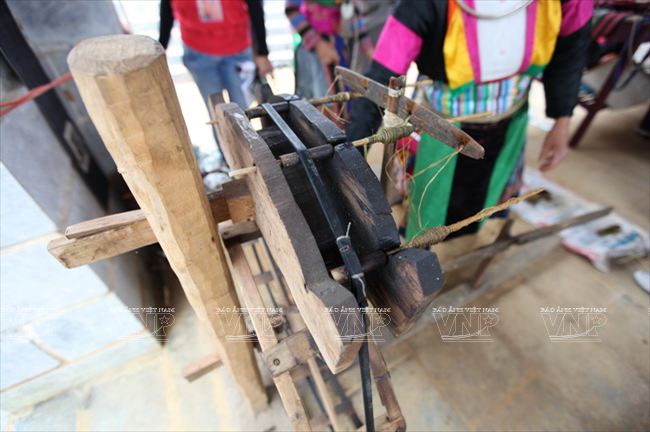
The Hmong make flax fiber spinning tools.
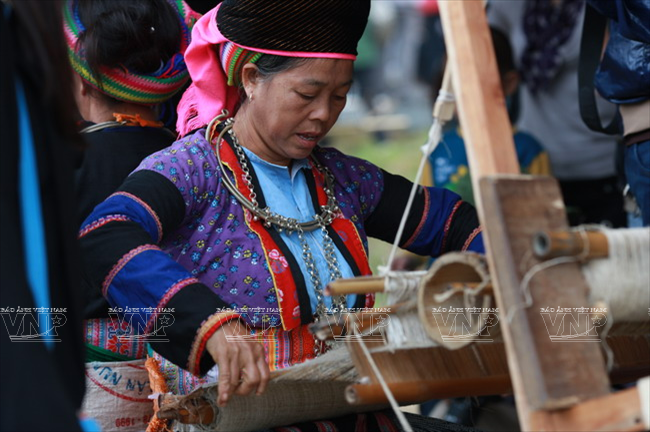
Hmong women weave linen with looms.
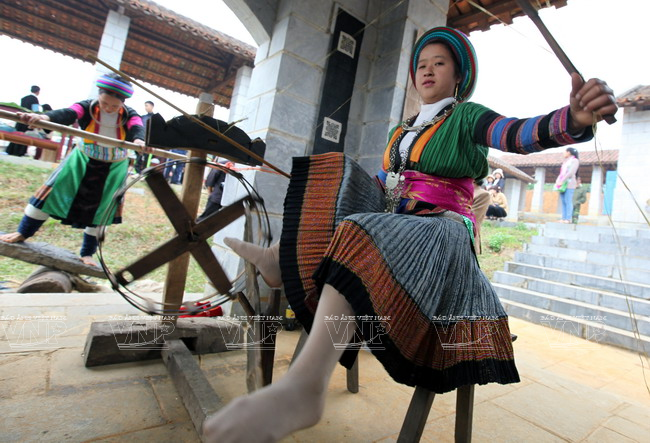
Hmong girls are very skilled at brocade and linen weaving.
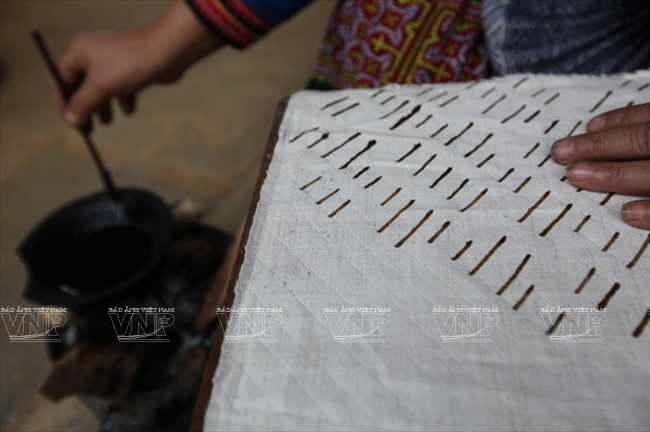
Beeswax heated to 50oC will be used to draw patterns onto newly woven linen.
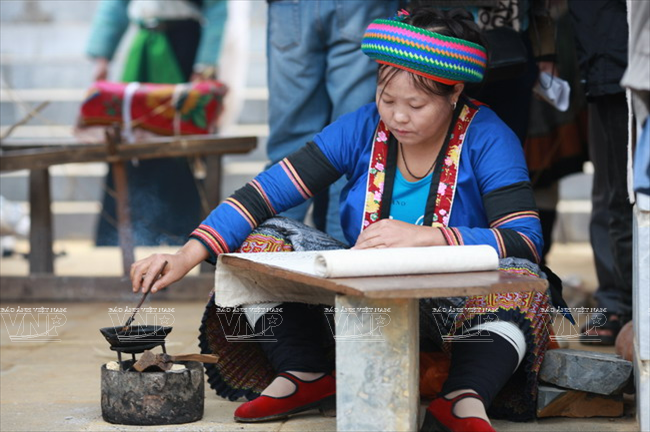
Completed linen cloth to be drawn on.
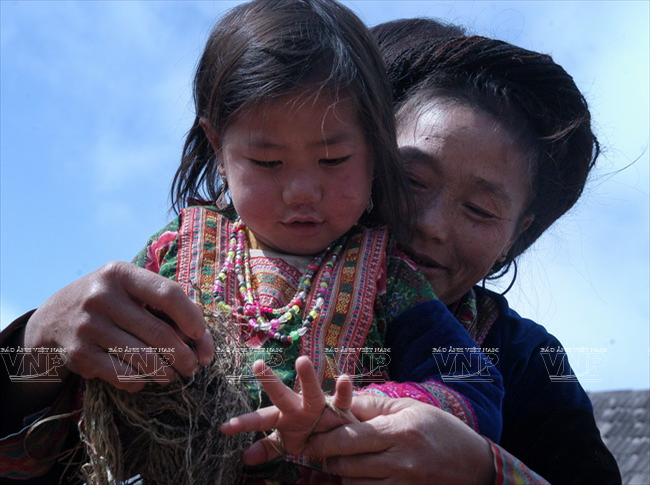
The Hmong’s linen weaving skills are handed down from generation to generation.
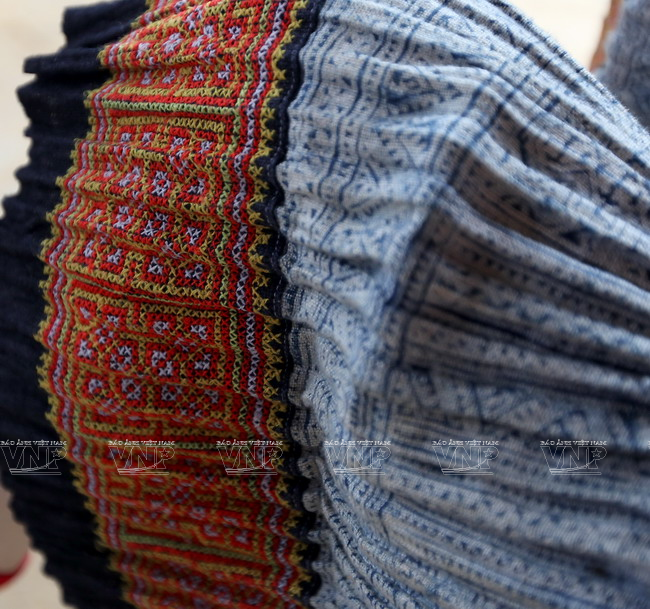
Hmong girls’ skirts made from linen. |
During a trip to Dong Van, we had an opportunity to talk with Sung Thi May from Sung Trai Commune about weaving. She said that “Now in my eighties, I have forgotten a lot except linen weaving. Every Hmong woman knows how to make a beautiful brocade dress from a bundle of flax fiber”. She then prepared her materials, hanging the flax fiber on the loom. After some complicated movements, beautiful linen cloth was made, showing the skills and diligence of Hmong women.
The phase that matters most in the Hmong brocade weaving process may be that of beeswax drawing. Hmong people know how to decorate the cloth by drawing patterns on it with bees- wax. Most of these patterns are embroidered, drawn, and sewn on the background of white or red linen which are supposed to be separate parts of the clothes. After the decorating is completed, these parts are assembled to make complete items.
We can watch Hmong women teaching their children about linen weaving with clattering looms whenever visiting hamlets in Dong Van Karst Plateau such as Lung Tam, Pho Cao and Sung La. For the Hmong, linen weaving methods and beeswax decorating skills which are handed down from generation and generation are imbedded deep in their culture. When girls come to the age of learning about love, they have mastered linen weaving skills. The ordinary craft has come into folk songs as a criterion to assess women’s characters: “Beautiful women who do not know of linen weaving are unattractive and pretty girls who know nothing about sewing are hardly acceptable.”

Two Hmong women rolling linen fiber on the way to market.

Visitors to Ha Giang can easily buy linen cloth sold at market.
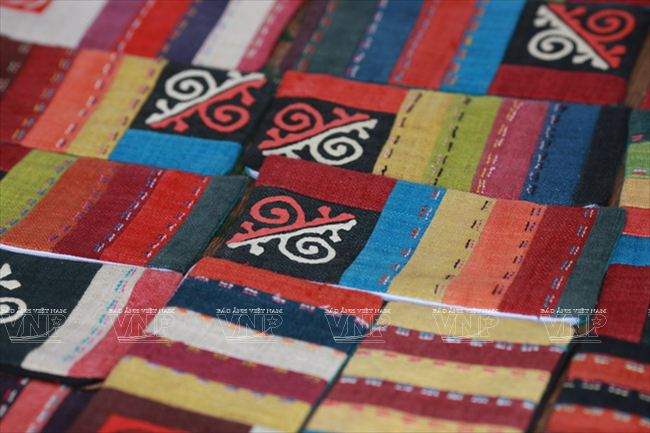
Linen made by the Hmong in Ha Giang.
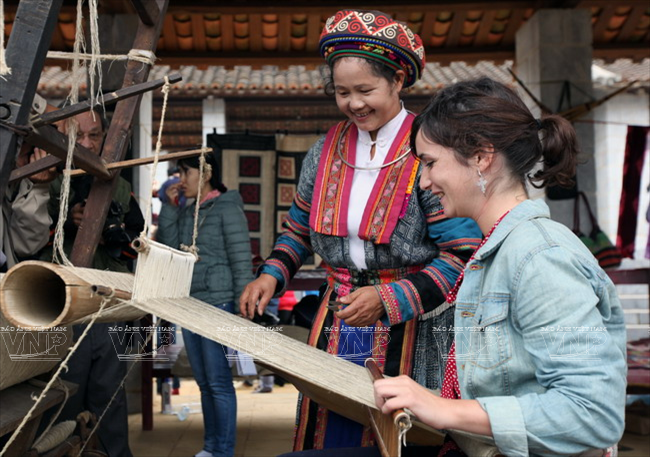
Foreigners are excited to learn about the linen weaving tradition of the Hmong. |
Phases to make the colorful cloth of the Hmong in Dong Van Karst Plateau has now become a unique and attractive cultural trait fascinating visitors of the brocade weaving craft of Lung Tam in Quan Ba District. The Hmong in Dong Van have also brought the linen weaving craft to several festivals, such as those in Hue, the Vietnamese Ethnic Groups Cultural Festivals in Dong Mo (Ha Noi) to be displayed and presented, drawing much attention from audience./.
Story: Thong Thien – Photos: Tat Son